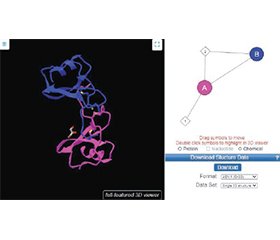Международный неврологический журнал Том 21, №5, 2025
Вернуться к номеру
3D-структура білка хемокінів при розсіяному склерозі
Авторы: Ahmed A. Salim1, Ihsan AlSaimary1, Amal A.K. Alsudany2, Ahmed Alshewered3
(1) - College of Medicine, University. of Basrah, Basrah, Iraq
(2) - Basrah Health Directorate, Ministry of Health, Basrah, Iraq
(3) - Misan Radiation Oncology Center, Ministry of Health, Misan, Iraq
Рубрики: Неврология
Разделы: Клинические исследования
Версия для печати
Актуальність. Коли клітини кісткового мозку та резидентні клітини мігрують до місць запалення, хемокіни та їх рецептори відіграють вирішальну роль. Імунологічні тригери розсіяного склерозу (РС) і терапевтичні ефекти системного лікування можна вивчати за біомаркерами периферичної крові. Мета: побудувати 3D-структури білків хемокінів (CCL2, CCL5 та CXCL10) та спостерігати за змінами в аналізі амінокислот. Матеріали та методи. З листопада 2021 року по травень 2022 року в Центрі розсіяного склерозу проведено дослідження хемокінів CCL2, CCL5 та CXCL10, пов’язаних із РС. 3D-структура білка визначена шляхом секвенування CCL2, CCL5 і CXCL10. Результати. 3D-структура білка CCL2, CCL5 та CXCL10 показала конвергенцію між ізольованим досліджуваним CCL2 і даними бази Gen-Bank (NCBI-2024) з ідентичністю 19/20 (95 %), при цьому CCL2 мав одну мутацію, що відображалася як (D до E). У той же час спостерігалася висока конвергенція між ізольованим CCL5 та даними бази GenBank (NCBI-2024) з ідентичністю 91/91 (100 %). Низька конвергенція між ізольованим CXCL10 та даними бази GenBank (NCBI-2024) з ідентичністю 22/28 (79 %) у CXCL10 мала шість мутацій, помічених як (C до I), (R до I), (V до Y), (E до F), (I до Y) та (I до S). Висновки. Досліджень щодо хемокінів при РС в Іраку не проводилося, тому ця робота є важливою як перша у визначенні 3D-структури білка хемокінів серед пацієнтів із РС в Іраку загалом та в Басрі зокрема.
Background. When bone marrow-derived and resident cells migrate to sites of inflammation, chemokines and their receptors play crucial roles. Immunological triggers of multiple sclerosis (MS) and the therapeutic effects of systemic treatment can be learned from peripheral blood biomarkers. This work aimed to draw the 3D protein structures of chemokines (CCL2, CCL5 and CXCL10) and observe the changes in amino acid analysis. Materials and methods. A designable study was conducted on CCL2, CCL5 and CXCL10 chemokines that related to MS in Multiple Sclerosis Center during November 2021 to May 2022. 3D protein structuring was done by sequencing of CCL2, CCL5 and CXCL10. Results. 3D protein structure of CCL2, CCL5 and CXCL10 showed a convergence between study CCL2 isolated and that of the Gen-Bank database (NCBI-2024) with identities 19/20 (95 %), CCL2 had one mutation appeared as (D to E), while there is a high convergence between study CCL5 isolated and that of the GenBank database (NCBI-2024) with identities 91/91 (100 %). A low convergence between study CXCL10 isolated and that of the GenBank database (NCBI-2024) with identities 22/28 (79 %) in CXCL10 had six mutations noticed as (C to I), (R to I), (V to Y), (E to F), (I to Y), and (I to S). Conclusions. No studies about chemokines of MS were conducted in Iraq, so the present study is found necessary as a first study to determine chemokines 3D protein structure among patients with MS in Iraq generally and in Basrah especially.
хемокіни; CCL2; CCL5; CXCL10; 3D-структура білка; конвергенція
chemokines; CCL2; CCL5; CXCL10; 3D protein structure; convergence

